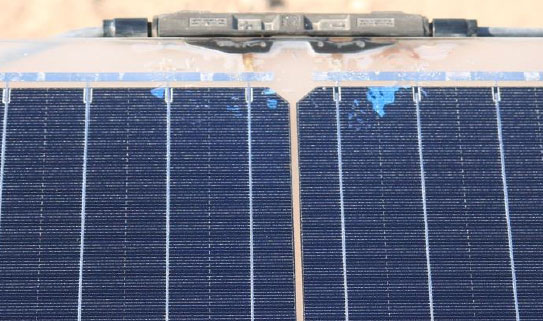Desert regions represent between 20 and 36% of the Earth's land area, depending on the definition criteria. Irradiance is high and constant, and land use conflicts are very limited. The Atacama Desert in Chile is a prime location for the installation of solar photovoltaic systems. This high potential is due in particular to its favorable exposure and low temperatures
However, the extreme climatic conditions of deserts raise the question of the durability and bankability of photovoltaic systems mainly developed for temperate climates.
Various studies have shown the necessity of establishing intensified laboratory test sequences to improve the representativeness of real life outdoor conditions. Feedback from both field measurements and laboratory tests as well as modelling show that high levels of irradiation, humidity, high temperature variations in day/night cycles are extremely demanding for PV modules. These stress factors have normalized values, described by standards, which are insufficient to describe properly severe environments such as the Atacama Desert.
In order to guarantee the reliability of the systems, the characterization methods must be adapted. Their definition and validation are part of the work carried out within the framework of ATAMOSTEC.
In order to address the extreme conditions of such environments in a representative way, it is necessary to pay particular attention to ultraviolet (UV) combined with humid heat, salt fog, and large temperature variations. Laboratory tests are corroborated by outdoor measurements in the Atacama Desert.
The established reference system has allowed the selection of appropriate ageing tests while exploring the reliability and durability of a wide range of panels. The analysis includes variations in components such as encapsulants, high-efficiency cells, as well as the way the cells are interconnected.
The project partners aim to define and verify a test procedure to create a "desert label" for photovoltaic panels, to better understand the ageing mechanisms and to define the composition of a photovoltaic panel for the desert.

© ATAMOSTEC
This work is being carried out in collaboration with ATAMOSTEC (Chile) and receives financial and organizational support from the Chilean government agency CORFO.